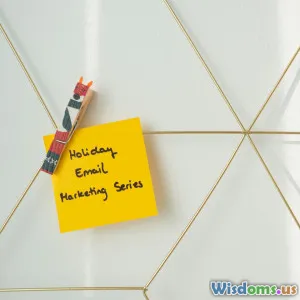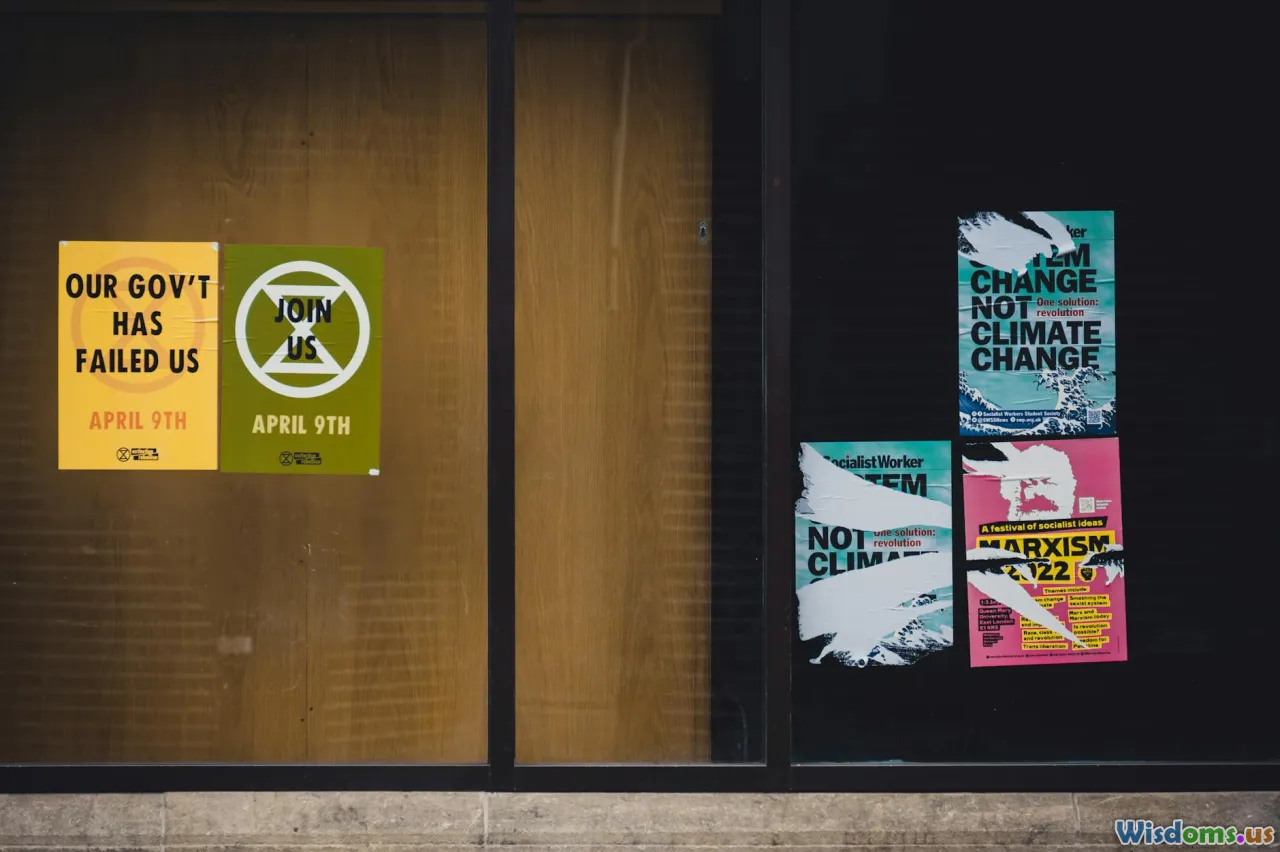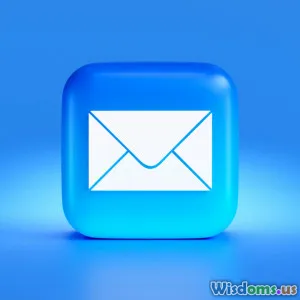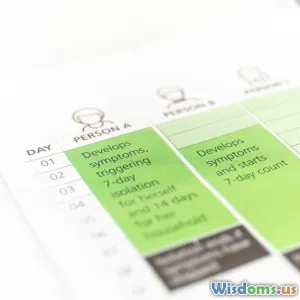
Why Most Drip Email Sequences Fail and What Actually Works in 2024
16 min read Uncover why most drip email sequences fail and discover updated strategies for high-performing email campaigns in 2024. (0 Reviews)
Why Most Drip Email Sequences Fail and What Actually Works in 2024
Drip email campaigns have long been hailed as one of the most efficient automation tools for marketers. The promise sounds simple: automatically send the right message at the right time to nurture leads, re-engage audiences, and drive conversions. But the reality, as shown by ever-declining open rates and abysmal click-throughs, is that many drip sequences simply don't work as intended in 2024. With overflowing inboxes and smarter consumers, what has gone wrong with most drip campaigns—and how can modern marketers design sequences that truly deliver results?
The Pitfalls of Traditional Drip Campaigns

At first glance, the drip sequence feels like automation magic. Marketers map out a sequence, set it, and forget it, believing their prospects will eventually convert. But statistics tell another story: average email open rates have fallen to around 16.4% for all industries, according to Mailchimp's 2024 benchmarks, while click-through rates hover just below 2%.
Why such dismal outcomes? The reasons are numerous:
- Generic Content: Most drip emails recycle the same templates and value propositions, failing to connect with recipients on a personal level.
- One-Speed-Fits-All: Sending emails on fixed schedules, regardless of recipient behavior, results in irrelevant or mistimed info.
- Lack of Data Utilization: Drips rarely leverage recent customer interactions, buying behavior, or preferences to personalize content.
- Automation Overkill: Too many marketers inundate contacts, mistaking quantity for impact.
Example: A SaaS company uses a 7-step onboarding email sequence with the same content for all users. Power users find the info too basic, while beginners are overwhelmed by jargon—all leading to disengagement.
Automation Gone Stale
Automated sequences, if not revisited regularly, can feel outdated or tone-deaf. A typical scenario: a retail customer purchased a product last week but continues to receive introductory ‘getting to know us’ emails. Not only is it irrelevant, but it signals a company isn’t attentive to individual journeys.
What Modern Buyers Expect from Email

Today’s digital consumers are savvier than ever. Their inboxes are crowded, but they still crave content that is timely, useful, and speaks directly to their needs.
Key expectations from recipients in 2024:
- Personalization Down to the Micro-Interest: Gone are the days when 'Hi [First Name]' was enough. Subscribers want messages relevant to their recent behaviors, purchases, and preferences.
- Authenticity and Human Touch: Robotic or overly salesy copy turns off modern readers. People want to hear from real humans with useful insights or stories, not scripts.
- Immediate Value: If an email doesn't deliver clear, instant benefits (a tip, download, shortcut, or exclusive offer), it's quickly ignored or worse, flagged as spam.
- Multi-Channel Integration: Drip emails should connect seamlessly with other touch points—SMS, push notifications, social DMs—to amplify contextual engagement.
Example: Spotify's ‘Unwrapped’ campaign delivers individualized stats and playlists based on listener history, making emails actually anticipated by users—a phenomenon most B2B campaigns rarely match.
Common Reasons Drip Sequences Fail Today

Let’s dissect the most frequent stumbling blocks in today’s email automations:
1. Over-Automation without Strategy
Many marketers deploy every automation tool at their disposal, leading to inbox overload. When recipients feel emails are sent blindly and en masse, they disengage rapidly.
Real-world stat: According to Litmus’ 2023 survey, 35% of unsubscribes are now attributed to 'receiving too many emails' as the primary reason, up from 20% in 2019.
2. Outdated Segmentation
Modern audiences evolve rapidly. Old-school segmentation based on broad categories (e.g., all leads in SaaS or every first-time buyer) is no longer enough. If your drip ignores recent purchases, on-site behaviors, or real-time interactions, you lose relevance.
Case Study: Marketing software giant HubSpot ran an A/B test and discovered that leads segmented by recent website activity saw a 30% boost in open rates compared to traditional, interest-based lists.
3. Misaligned Timing and Triggers
Rigid send-times (e.g., every three days) or generic triggers (form fill, lead magnet download) ignore individual buyer behavior. The result: some subscribers get bombarded, while others receive missed-timed or redundant content.
4. Ignoring Feedback Loops
Few marketers track replies, unsubscribes, or negative signals in real-time. Without adjusting sequences when users opt out, mark as spam, or stop engaging, you burn your list instead of nurturing it.
What Actually Works for Drip Campaigns in 2024

Marketers who are succeeding with drip sequences in 2024 are those who treat automation as a starting point, not a solution in itself. Here are tactics proven to drive results this year:
1. Dynamic Segmentation and Real-Time Personalization
Effective drip campaigns revise segmentation continually—reacting to recent site actions, purchases, or interaction with previous emails.
How-to Example:
- E-commerce store sets up triggers so browsing a specific product category puts user into that segment, and triggers emails tailored to those interests. If a customer checks out hiking boots, the next emails highlight related gear, not generic apparel.
Stat: 2024 research from Campaign Monitor indicates emails personalized using dynamic segmentation see a 52% lift in transaction rates.
2. Behavioral Triggers Over Timed Blasts
Smart drips use behavioral signals. Did the subscriber click but not purchase? Did they abandon a cart? Did they attend a webinar?
Best Practice:
- After a user attends a webinar, trigger a relevant case study followed by a satisfaction poll or exclusive offer, not a generic follow-up sequence. Adjust scenarios depending on participation level or questions asked.
3. Sentiment and Feedback Integration
Modern platforms can use sentiment analysis and user feedback to adjust drip marketing in-flight. Open rates, click activity, and even direct replies can be integrated into next-step logic.
Pro advice: If a subscriber consistently ignores product promo emails, reduce this content in favor of educational or how-to resources in their journey.
4. Multi-Channel Synergy
Drip journeys now extend beyond emails. Combine emails with retargeted ads, personalized SMS, and in-app notifications to reinforce messaging based on where the contact is interacting.
Tip: A prospect who ignores emails but engages with your app might receive a succinct in-app prompt, nudging return to their journey, instead of another ignored email.
5. Hyper-Relevant Content with Fresh Additions
Keep automations from turning stale by frequently adding new case studies, blog articles, snippets, or testimonials. Treat your drip sequence as a living strategy, not a set-in-stone series from years past.
Brand Example: Notion frequently updates workflow templates and tips in its onboarding and engagement drips, ensuring even longtime users find novelty and relevance.
Anatomy of a High-Performing Drip Sequence Today

How does a successful 2024 drip campaign look in practice? Here’s a blueprint:
- Entry Trigger: Multi-factor, e.g., signed up for a webinar AND visited pricing page within 3 days.
- Initial Touchpoint: Personalized “Thank you” with resource suggestions based on signup behavior.
- Behavioral Forks: If recipient clicks on a product link, follow-up with detailed features; if not, follow with a high-level benefit primer.
- Value-First Education: Use lean content: how-to guides, quick wins, customer success stories.
- Personal Check-Ins: Human-sounding, direct-reply emails checking if the content is helpful, inviting feedback.
- Incentives or Next-Step: Timely discount, exclusive beta access, or invitation based on engagement data.
- Exit Assessment: Pause or amend sequence if there’s no engagement after several steps; invite feedback or offer a quiet ‘exit’ with a clear option to unsubscribe or change preferences.
Tools and Technologies Leading the Charge

A powerful drip sequence in 2024 is more than smart copy: it requires leveraging evolving tech stacks. Here are some market-leading technologies making a difference:
- AI-Powered Personalization Platforms: Tools like ActiveCampaign and Salesforce Pardot now use AI to analyze customer behavior and adapt sequences in real-time.
- Integration Suites: Zapier and Tray.io allow marketers to interlink drips with SMS, billing, and CRM changes, ensuring up-to-date triggers.
- Customer Data Platforms (CDPs): Platforms like Segment unify data across channels, making personalization accurate and timely.
- Audience Feedback Tools: Tools like Typeform or Delighted embed instant feedback loops directly into email journeys.
Example Integration: A fintech company connects its CDP (Segment) to an email tool (Customer.io) and feedback platform (Typeform), dynamically adjusting onboarding sequences based on product usage and NPS feedback.
Crafting Messages That Cut Through the Noise

Content is still king—even in automated drip workflows. Make every email count:
Personal Storytelling and Social Proof
Reference your own or real customer journeys, not just product features. Use short stories, testimonials, and authentic voices.
“Hi Lisa, we noticed you’re exploring our productivity tools—in fact, here’s how Sarah boosted her workflow using our calendar feature…”
Crisp, Minimalist Design
With users reading on mobile (now over 61% of email opens, Litmus 2024), keep copy short and formatting mobile-friendly. Replace multiple CTAs with one clear next step.
Experimentation and Subject Line Testing
Trending subject lines in 2024 are personalized (“[First Name], your project insights are ready”) and curiosity-driven (“Have you missed this shortcut?”), rather than broad sale announcements. A/B test constantly—what worked last month may fall flat today.
How to Rescue a Failing Drip Sequence

If your current sequences are underperforming, don't scrap everything at once. Use data and incremental optimization to correct course.
Rescue Steps:
- Segment Audit: Break lists down by recent behavior—what have they opened or clicked recently? Discard or pause campaigns for two months of inactivity, and retarget those leads with a re-engagement sequence.
- Personalized Surveys: Ask directly for feedback. “Are our emails useful? How can we serve you better?” Embed simple polls in an email’s body.
- Refresh Content: Swap outdated templates, images, or CTAs for new assets. Consider referencing current events vis-à-vis your niche for freshness.
- Update Triggers and Delays: Instead of timed emails, switch to behavioral triggers or adaptive delays—e.g., send the next step only after a previous action.
- Real-Time Analytics: Don’t wait for monthly reports. Weekly, check engagement heatmaps, reply rates, and direct feedback to pivot, pause, or optimize segments mid-flight.
Success Story: Digital course creator Skillshare cut their onboarding sequence from ten emails to five adaptive touchpoints, based on each student’s lesson progress—downsizing increased free-to-paid conversion by 18%.
Final Thoughts: The Future of Drip Email Sequences

As inboxes only get more crowded, lazy automation and one-size-fits-all campaigns will fade into obscurity. In 2024, the drip sequences that stand out go beyond automation—they listen, adapt, and deliver value at every touchpoint. By blending real-time data, authenticity, and a relentless focus on customer experience, marketers can ensure that their emails don't just reach inboxes, but resonate and achieve lasting impact.
Rate the Post
User Reviews
Popular Posts



















